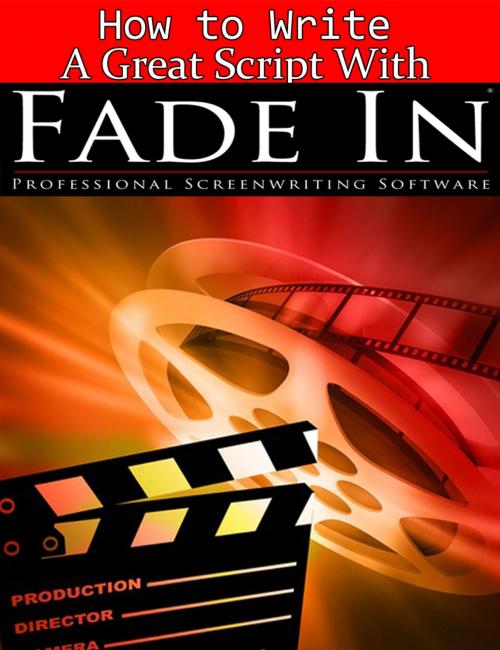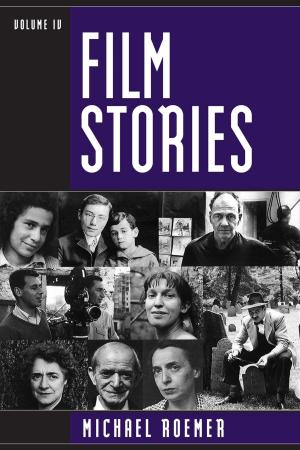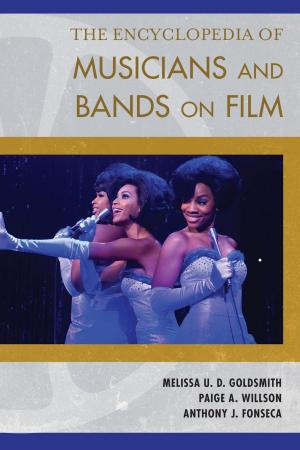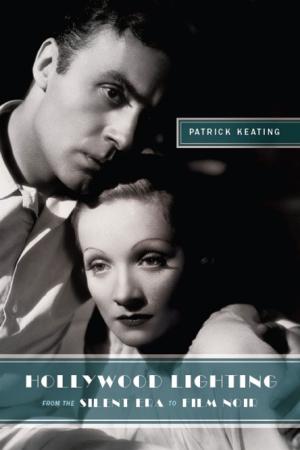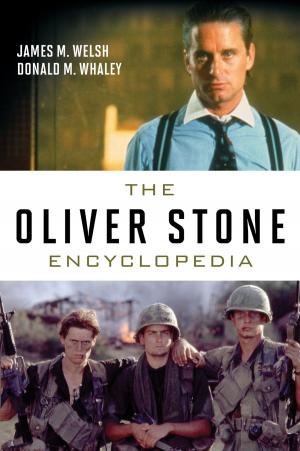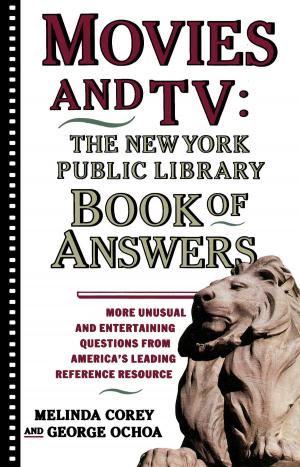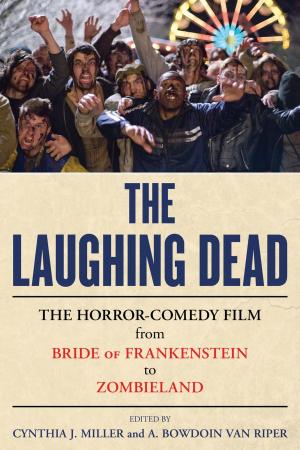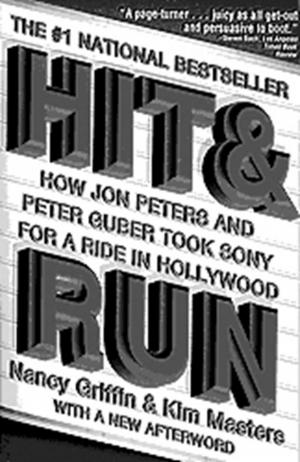How to Write a Great Script with Fade In
Nonfiction, Entertainment, Performing Arts, Television, Screenwriting, Film| Author: | Wallace Wang | ISBN: | 1230000219705 |
| Publisher: | Wallace Wang | Publication: | February 19, 2014 |
| Imprint: | Language: | English |
| Author: | Wallace Wang |
| ISBN: | 1230000219705 |
| Publisher: | Wallace Wang |
| Publication: | February 19, 2014 |
| Imprint: | |
| Language: | English |
One little known secret of Hollywood is Fade In Professional Screenwriting Software, a low-cost alternative to expensive screenwriting word processor software. Fade In not only costs a fraction of the price of popular screenwriting programs like Final Draft and Movie Magic Screenwriter, but it can run on the three most popular operating systems in use today (Windows, OS X, and Linux) while giving you the freedom to make multiple copies to run on all of your computers. In comparison, other high-priced screenwriting programs often restrict you to installing their software on two computers. If you use more than two computers regularly, you’ll need to pay extra to run the program on another computer.
With Fade In, you have all the features (and sometimes more) of the higher-priced programs with more flexibility to work the way you want to work. While other screenwriting programs focus on both screenwriting and the production aspect of film making, Fade In focuses exclusively on writing a screenplay. If you want to write a screenplay with the least amount of hassle and expense, you want to use Fade In.
Although Fade In works as an excellent screenplay formatting word processor, that’s actually the last feature you want to use. Where most people go wrong is that they focus first on writing their screenplay without knowing what to write or taking time to organize their ideas before they write.
In this book, you'll learn Fade In’s most common features, but you’ll also learn why to use them and how they can help you organize and write a more effective screenplay. To use Fade In most effectively, you need to know how to develop a story. Having a great screenwriting program like Fade In is fine, but if you don’t know what to write, then you won’t be able to take advantage of Fade In’s writing, formatting, and editing features.
That's why this book is a combination tutorial on how to use Fade In as well as a tutorial on how to plan and organize your story idea using Fade In's various features. By knowing how to structure your story correctly from the start, you can focus on writing the best screenplay possible using Fade In.
Good story telling is based on character development combined with a compelling plot and a unified theme. Think of some of the best movies in history from "Casablanca" and "Citizen Kate" to "Star Wars" and "The Shawshank Redemption." Great movies follow a well-defined story structure that can be duplicated for any story, including your great screenplay idea. In this book, you'll learn how to duplicate that time-tested story structure using Fade In as your screenwriting tool.
Introduction
Chapter 1: Getting Ideas
Chapter 2: Picking a Theme
Chapter 3: The Story Title
Chapter 4: The Major Characters
Chapter 5: The Hero and the Villain
Chapter 6: The Mentor, the Allies, and the Henchmen
Chapter 7: The Four Acts of a Screenplay
Chapter 8: Creating and Manipulating Scenes
Chapter 9: Understanding the Elements of a Screenplay
Chapter 10: Working with Scenes
Chapter 11: Making Dialogue Come to Life
Chapter 12: Editing a Screenplay
Chapter 13: Printing and Sharing a Screenplay
If you've always dreamed of writing a screenplay, you can. With an inexpensive, but powerful screenplay word processor like Fade In and the information in this book, you can turn your dreams into reality and write a screenplay far faster and easier than you might have thought possible.
Don't delay. You can start working on your screenplay today!
One little known secret of Hollywood is Fade In Professional Screenwriting Software, a low-cost alternative to expensive screenwriting word processor software. Fade In not only costs a fraction of the price of popular screenwriting programs like Final Draft and Movie Magic Screenwriter, but it can run on the three most popular operating systems in use today (Windows, OS X, and Linux) while giving you the freedom to make multiple copies to run on all of your computers. In comparison, other high-priced screenwriting programs often restrict you to installing their software on two computers. If you use more than two computers regularly, you’ll need to pay extra to run the program on another computer.
With Fade In, you have all the features (and sometimes more) of the higher-priced programs with more flexibility to work the way you want to work. While other screenwriting programs focus on both screenwriting and the production aspect of film making, Fade In focuses exclusively on writing a screenplay. If you want to write a screenplay with the least amount of hassle and expense, you want to use Fade In.
Although Fade In works as an excellent screenplay formatting word processor, that’s actually the last feature you want to use. Where most people go wrong is that they focus first on writing their screenplay without knowing what to write or taking time to organize their ideas before they write.
In this book, you'll learn Fade In’s most common features, but you’ll also learn why to use them and how they can help you organize and write a more effective screenplay. To use Fade In most effectively, you need to know how to develop a story. Having a great screenwriting program like Fade In is fine, but if you don’t know what to write, then you won’t be able to take advantage of Fade In’s writing, formatting, and editing features.
That's why this book is a combination tutorial on how to use Fade In as well as a tutorial on how to plan and organize your story idea using Fade In's various features. By knowing how to structure your story correctly from the start, you can focus on writing the best screenplay possible using Fade In.
Good story telling is based on character development combined with a compelling plot and a unified theme. Think of some of the best movies in history from "Casablanca" and "Citizen Kate" to "Star Wars" and "The Shawshank Redemption." Great movies follow a well-defined story structure that can be duplicated for any story, including your great screenplay idea. In this book, you'll learn how to duplicate that time-tested story structure using Fade In as your screenwriting tool.
Introduction
Chapter 1: Getting Ideas
Chapter 2: Picking a Theme
Chapter 3: The Story Title
Chapter 4: The Major Characters
Chapter 5: The Hero and the Villain
Chapter 6: The Mentor, the Allies, and the Henchmen
Chapter 7: The Four Acts of a Screenplay
Chapter 8: Creating and Manipulating Scenes
Chapter 9: Understanding the Elements of a Screenplay
Chapter 10: Working with Scenes
Chapter 11: Making Dialogue Come to Life
Chapter 12: Editing a Screenplay
Chapter 13: Printing and Sharing a Screenplay
If you've always dreamed of writing a screenplay, you can. With an inexpensive, but powerful screenplay word processor like Fade In and the information in this book, you can turn your dreams into reality and write a screenplay far faster and easier than you might have thought possible.
Don't delay. You can start working on your screenplay today!
